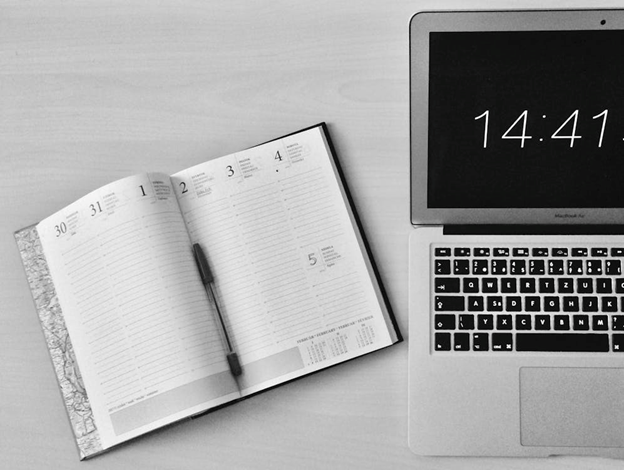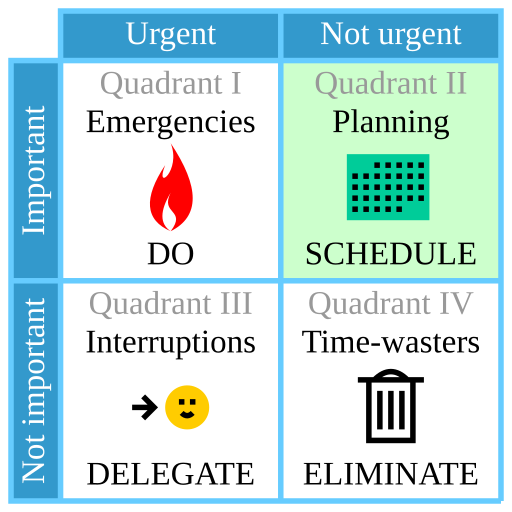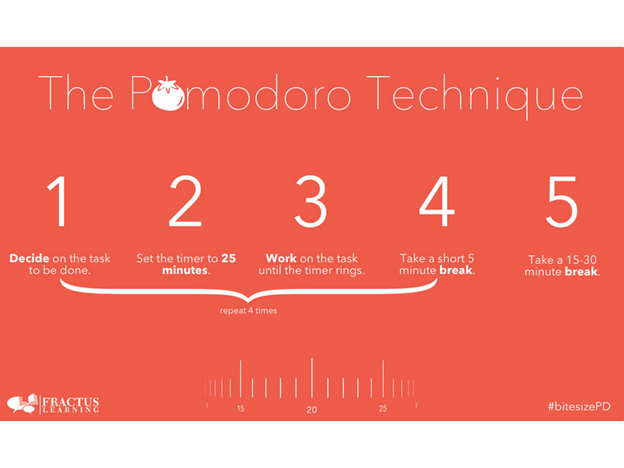Freelancing offers flexibility, freedom, and the ability to work with various clients and projects. However, juggling multiple gigs can quickly turn from exhilarating to exhausting if you don’t have a solid plan in place.
Time management becomes crucial when balancing different deadlines, client expectations, and administrative tasks—all while trying to maintain your sanity. For freelancers striving to level up their careers, managing multiple gigs efficiently can be the difference between a thriving freelance business and burnout.
This guide provides practical strategies for effective time management, from organizing your day to choosing the best tools. We’ll cover how to structure your workload, maximize productivity with technology, and set boundaries that help you stay on track. Let’s dive into how you can balance multiple projects with confidence and clarity.
1. Setting Priorities: Organize Your To-Do List for Maximum Impact
Time management for freelancers begins with clear, actionable priorities. With multiple clients and projects, you’ll encounter tasks of varying levels of urgency and importance. Setting effective priorities is critical to ensure nothing falls through the cracks and to help you focus on what truly matters.
Money Note: If an extra $1K–$5K/month would change your 2026 goals (debt, savings, travel, freedom), you’ll want to catch this: free live workshop from a freelancer who’s earned $4M+ online. No fluff. No gimmicks. A real roadmap. 👉 Watch the training or save your seat here »
Knowing where you’re headed with each project is an essential part of setting priorities. To enhance this process, master your yearly planning with goal setting examples that can offer clarity and direction for every project you undertake. By implementing effective goal-setting techniques, you’ll create a roadmap that makes prioritizing daily tasks easier and more meaningful.
How to set effective priorities
Image by Cmglee from Wikimedia Commons
A practical method to prioritize tasks is the Eisenhower Matrix, which divides tasks into four categories:
- Important and urgent: Tasks in this category need immediate attention, such as projects with deadlines that are fast approaching. Aim to tackle these tasks early in the day when your energy is highest.
- Important but not urgent: This is where you should place long-term projects or skill development tasks. They’re essential for your growth and long-term success but don’t demand immediate action.
- Urgent but not important: Often, these tasks are distractions that feel pressing but add minimal value, such as non-essential emails or admin tasks. Delegate or limit the time you spend on these.
- Not urgent or important: These tasks are unnecessary for your immediate goals. For example, spending too much time on social media can significantly distract. Try to eliminate these as much as possible.
Using a digital tool like Todoist or Microsoft To-Do allows you to arrange your tasks by these categories and deadlines, add notes, set reminders, and track your progress over time. By ranking tasks by importance and urgency, you prevent high-priority work from overshadowing less critical tasks.
Daily task breakdown
Another effective strategy is to break your daily to-do list into small, manageable segments. That reduces the feeling of overwhelm and allows you to build momentum as you complete tasks. Consider these approaches:
- The 1-3-5 Rule: Set one large task, three middling tasks, and five small tasks per day. This method ensures that you focus on significant tasks while making room for minor ones, helping you progress consistently across different projects.
- Batch Processing: Group similar tasks (like responding to emails or doing client calls) into one time block. By batching, you avoid task-switching, which can sap your energy and disrupt your focus.
A well-prioritized to-do list keeps you organized, ensures you’re working on tasks that bring the most value, and builds in time for urgent client work and long-term growth.
Goal setting
Knowing where you’re headed with each project is an essential part of setting priorities. Without a clear, overarching goal for each project, freelancers can get lost in the details of daily tasks. By setting specific, measurable goals for each gig, you’ll create a roadmap that guides your daily priorities.
- Define Clear Goals for Each Project: Work with your client to establish clear objectives at the start of each project. For example, if you’re a freelance writer, your goal might be to complete a 5,000-word e-book by the end of the month. Understanding the goal helps you see the bigger picture, which makes prioritizing tasks easier and more meaningful.
- Break Down Goals into Steps: Once you’ve identified the end goal, divide it into smaller, manageable tasks. Continuing with the e-book example, your breakdown might include research, outlining, drafting, editing, and formatting, each with its own sub-deadlines. This approach not only helps you see what needs to be done but also allows you to assign specific days or time blocks to each step.
- Set Milestones and Deadlines: Setting milestones lets you track progress and adjust as needed for larger projects. Milestones provide checkpoints, such as “finish chapter one by the end of the week,” which help you maintain momentum without feeling overwhelmed by the final deadline.
- Evaluate and Adjust Regularly: Priorities may shift as you complete tasks and projects evolve. Set aside time each week to evaluate your progress and adjust your priorities. This reflection period helps you stay flexible and responsive, ensuring that your daily tasks continue to align with your goals.
By using goal-setting and task-breakdown strategies, you create a structured path for each project that clarifies what’s most important. This roadmap enables you to move through your day purposefully, knowing that each task you complete is a step toward achieving your overall goals.
2. Structuring Your Daily Routine for Consistency and Focus
While freelancing offers a flexible schedule, an unstructured day can quickly lead to inefficiency. A structured daily routine establishes predictability and balance, which helps you maintain focus and consistency, even with a demanding workload.
One approach to structuring your day is time-blocking, where you assign blocks of time for specific tasks or clients. Here’s a sample routine:
- Mornings: Start with high-energy, focused work, like writing or complex problem-solving. Many freelancers find mornings to be the most productive time for work, as they require concentration.
- Midday: Take a break to recharge with physical activity, a healthy meal, or even a quick walk outside. Midday breaks prevent burnout and boost afternoon productivity.
- Afternoons: Reserve this time for meetings, emails, and less demanding tasks. Completing lighter tasks in the afternoon keeps you productive without exhausting your mental energy.
- Evenings: Set aside 15–30 minutes to review what you accomplished and update your to-do list for the next day. A quick review session keeps you organized and lets you “close the loop” on the day’s work.
For freelancers with clients across time zones, tools like Clockify help you allocate hours to different projects and track time accurately. These insights will help you know how long tasks take, helping you quote accurately and avoid over-committing.
3. Setting Boundaries: Learn To Say “No” Without Guilt
Freelancers often take on more than they can handle out of fear of losing income or client relationships. However, effective time management relies on setting boundaries to avoid burnout and stay in control of your schedule.
Learning to say “no” is a crucial skill for managing time. When clients request more work or quicker turnarounds, take a moment to consider your current commitments before agreeing. For example:

- Politely decline: If a client asks for something that doesn’t fit your current load, thank them for the opportunity and explain your current commitments. Offer an alternative timeline that suits your availability. For example: “I’d love to take this on, but I’m currently booked. Would it be possible to start next week?”
- Setting working hours: Freelancers often work irregular hours, but by establishing specific working hours, you communicate clear expectations to clients. For instance, tell clients you’re available for meetings between 9 am and 3 pm. That prevents late-night calls and allows you to set aside uninterrupted focus time.
Setting boundaries isn’t just about saying no; it’s about balancing client needs with your ability to deliver quality work without compromising your well-being. Respecting your own time helps clients appreciate it, too.
4. The Power of Project Management Tools
A freelancer’s workload can quickly become scattered, especially when working with multiple clients and projects. Project management tools are indispensable for organizing, tracking, and maintaining control over your time.
Choose one that fits your workflow to get the most out of a project management tool. Here’s a breakdown of a few popular options:
- Trello: Best for freelancers managing many small, quick-turnaround tasks. The card system lets you visually organize projects and track progress.
- Asana is ideal for those working on larger projects with multiple phases. Its task dependency feature helps you keep track of deadlines, milestones, and upcoming work.
- Notion: Notion is incredibly flexible, combining features like task management, note-taking, and databases. You can create a personalized workspace that includes everything from a calendar view to knowledge databases.
Each of these tools offers free trials or versions, so you can test them and see which matches your needs. A centralized project management system helps you monitor multiple gigs in one place, so you don’t waste time jumping among notes, emails, or sticky notes.
5. Mobile Technology for Freelancers: Work On the Go With Productivity Apps
Mobile technology has transformed the way freelancers work, making it possible to manage tasks, answer client messages, and track time from virtually anywhere. Smartphones now offer a wide array of productivity apps that keep you on top of your projects, even when you’re away from your desk. Explore the best Apple phone deals to upgrade your mobile office and take advantage of the latest productivity tools.
Here are a few apps to consider adding to your mobile arsenal:
- Toggl for time tracking: This app is simple yet powerful, with easy-to-use timers that log hours across projects.
- Slack for communication: If you work with teams or clients who use Slack, the mobile app keeps you connected, whether in a coffee shop or on the go.
- Google Drive for file access: Sync your files to the cloud and access them from your phone. That is especially useful for sharing documents with clients on short notice.
Using mobile technology effectively ensures you don’t miss a beat, even if you’re balancing multiple projects while away from your desk.
6. Self-Care and Productivity: Why Taking Breaks Makes You More Effective
As a freelancer, you may be tempted to work through every possible minute to meet deadlines. However, breaks are vital for maintaining productivity and mental health. Without time for rest, your brain becomes fatigued, and your ability to focus and produce high-quality work diminishes.
Image by Tom Woodward from Flickr
Establish the Pomodoro Technique, where you work for 25 minutes and then take a five-minute break, as a work habit. After four cycles, take a longer break, like 15–30 minutes. This technique encourages deep focus while giving your mind a chance to recharge. Studies show that structured breaks can actually make you more productive, giving you a fresh perspective when you return to work.
Taking breaks also helps establish a mental boundary between tasks, which is especially valuable when switching between multiple clients or projects. Use a break to step outside, stretch, or clear your mind so you’re fully refreshed for the next task.
7. Automation Tools: Save Time on Repetitive Tasks
Automating repetitive tasks is among the best ways to manage multiple gigs. From social media posting to invoice reminders, automation can free up time you can dedicate to your projects. Many tools are available to streamline processes and improve efficiency.

For social media, Bulk.ly offers scheduling and automation tools tailored to freelancers who need to keep their online presence active but don’t have time for daily posts. Learn how to use automation to save time by setting up a social media calendar that posts content automatically so you can focus on the work that matters.
Other options include Zapier and IFTTT, which connect different apps and automate workflows. For instance, you can set up a Zap that saves your Gmail attachments directly to Google Drive, reducing time spent on email organization.
8. Managing Finances: Tips for Staying Organized With Invoices and Expenses
Freelancers wear many hats, and managing finances is one of the most important. Organizing your invoices, expenses, and tax documents helps you avoid financial stress. It allows you to focus on client work.
Consider using a tool like QuickBooks Self-Employed to track expenses, invoice clients, and estimate taxes. Set up an exclusive business account to separate personal and business finances, which makes bookkeeping simpler and less time-consuming. By staying on top of your finances, you reduce the chance of last-minute surprises at tax time.
Update your income and expenses regularly to track your cash flow. That ensures you have enough savings for slower periods, giving you peace of mind and the ability to make strategic decisions for your freelance career.
9. Continuous Learning: Staying Updated and Developing New Skills
Freelancing means you’re constantly learning. Keeping up with industry trends, tools, and skills allows you to offer clients the best value and makes you more competitive in the market. Set aside time each month to learn something new, whether mastering a software tool or exploring a new marketing strategy.
Online platforms like Skillshare and LinkedIn Learning offer courses for freelancers looking to improve their skills. Web articles also offer a wealth of information on marketing strategies and tools if you’re interested in enhancing your social media marketing.
Staying updated improves your work and allows you to charge higher rates for specialized skills. With a commitment to learning, you’ll grow your freelance business and remain a valuable asset to your clients.
10. Avoiding Burnout: Recognizing the Signs and Taking Action
Balancing multiple gigs can be rewarding, but it’s essential to recognize signs of burnout. Fatigue, decreased motivation, and irritability are common indicators that you’re pushing yourself too hard. Taking steps to manage stress and prevent burnout keeps your freelance career sustainable.
- Set work-life boundaries: Make time for hobbies and social connections outside work.
- Practice mindfulness: Meditation, journaling, and similar activities can help you unwind and reduce stress.
- Schedule time off: Even if you’re busy, taking a day off to recharge can make a huge difference.
Freelancers who prioritize mental health not only maintain productivity but also enjoy the work they do. Remember, rest is essential for doing your best work.
Final Thoughts: Staying Productive and Thriving as a Freelancer
Managing multiple gigs as a freelancer is an art that requires a mix of organization, boundary-setting, and smart use of technology. By implementing time management strategies, using the right tools, and taking care of your mental health, you can have the freedom and flexibility freelancing offers without feeling overwhelmed.
Embrace a routine that works for you, invest in technology that keeps you connected and efficient, and don’t be afraid to set boundaries that protect your well-being. Freelancing is a journey, and by building habits that support your goals, you’ll create a fulfilling career where you can take on diverse projects and thrive.
Keep the conversation going...
Over 10,000 of us are having daily conversations over in our free Facebook group and we'd love to see you there. Join us!




